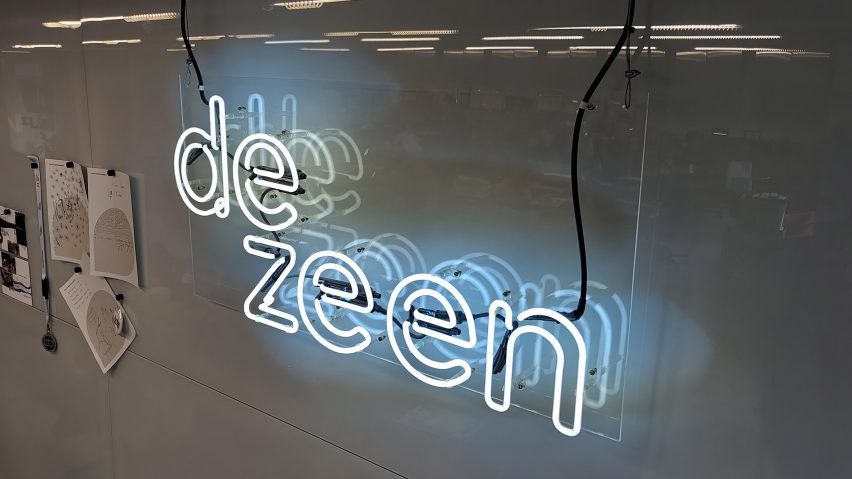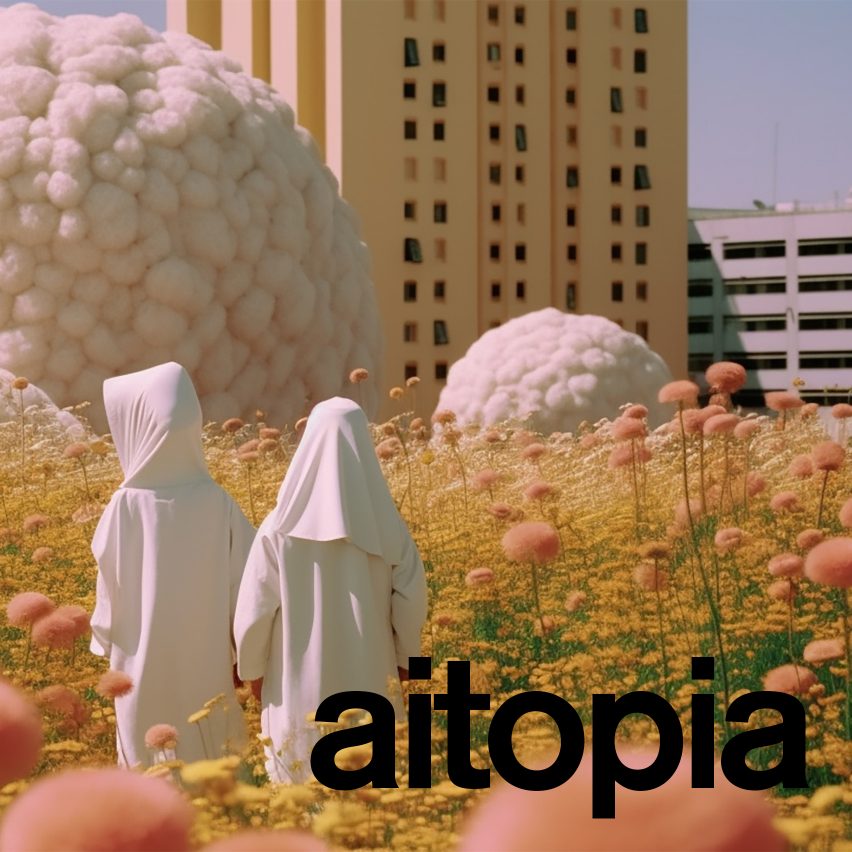
Dezeen's policy on AI
To round off our AItopia series exploring the impact of artificial intelligence on design, architecture and humanity, Dezeen editorial director Max Fraser sets out our policy on text- and image-generating technologies.
Used responsibly, artificial intelligence (AI) has transformative potential across the industries that Dezeen covers, as well many other sectors and areas of society. It can rapidly generate and visualise sometimes far-fetched ideas, speed up the processing and summarisation of vast data sets, and predict and simulate practical scenarios such as the impact of daylight, noise or inclement weather.
But it's not all positive. AI technologies are already coming under criticism for their reliance on information trawled from the web, resulting in mistruths, biases against marginalised groups, and risking potential breaches of intellectual property.
There is currently a lack of international agreement on what constitutes ethical AI, something developers and governments are scrambling to define. Meanwhile, AI laboratories are left to self-regulate in a burgeoning and ever-moving industry.
Dezeen embraces new technology, and AI is no exception. The fact is that we already use AI every day, and have done for some time. From transcription software Otter to subediting assistant Grammarly and text-narration tool AdAuris, the technology has helped to make our work more efficient and more accessible.
However, the rapid development of generative AI tools such as ChatGPT and Midjourney over the past year means it is now prudent for us to follow other publications in stating our policy on the technology.
We acknowledge the pitfalls and vulnerabilities as it relates to our practice in the media. Despite the alluring imagery it can synthesise or the seemingly authoritative text it can spew out, Dezeen will remain alert to AI's potential encroachment on originality and will always apply our high standards in the judgement of AI projects.
Here we outline the parameters within which we will – or will not – engage with the AI tools currently available to us.
Text and copy
Throughout our coverage of AI, Dezeen's editorial team has experimented with large language models such as ChatGPT and Bard to consider the ethics and efficacy of the ever-evolving tools at our disposal.
We take a strong stance against using such technologies as a primary tool for writing stories. The significant and well-documented issues surrounding reliability of the information they produce could undermine the accuracy, transparency and accountability on which Dezeen prides its content. And even if none of this presented a problem, the text levied by AI is often dull and unimaginative.
Therefore, Dezeen does not publish stories that use text generated by AI, either wholly or partially. If AI-generated text is directly inserted into our published journalism, it is only when the story is focused on AI and is clearly labelled as such. Outside of this context, if there is ever an occasion when a writer intends to use AI-generated text, this will always be approved by a senior editor and will be clearly stated to readers in the story itself.
Dezeen currently uses AI tool Grammarly to check spelling and grammar, but every story that appears on Dezeen will continue to have a human editor. We don't assume AI editing can make correct judgements in relation to the topic without running the risk of the meaning, structure and tone being altered.
Other AI-powered tools that Dezeen's content teams currently use include the voice-to-text tool Otter, which helps to streamline the otherwise time-consuming task of transcribing interviews. Transcriptions from these useful-but-far-from-infallible platforms are always carefully checked for accuracy by the interviewer before publishing.
Dezeen also uses AI tools to serve some content to our readers. For example, we use a service called LiftIgniter to suggest related content at the bottom of stories and in the right-hand column on the website, while AdAuris uses AI to convert text to audio, enabling people to listen to our stories.
On occasions, we may use a variety of AI tools to brainstorm options for headlines, story ideas or for research purposes, but only to assist the work carried out by the Dezeen team. In all circumstances, final decisions will always be made by human judgement and meet the rigorous standards followed by the editorial team.
Images and photography
We value original content in all formats, and photography and artwork are no exception. We continue to favour publishing photography and human-authored illustrations over AI-generated images. We encourage third parties who submit images for publication on Dezeen to be transparent about any AI tools they may have used to create the images and, if relevant, will include that information in the article when provided.
On occasions when we create our own artwork or imagery, we may deem it appropriate to use AI-generated artwork to illustrate a story. We will always be transparent about this and acknowledge the model used. For any other stories that require illustration, we will commission a human illustrator. That person may use image-generating AI to assist in developing ideas but we require that they create the final artwork using their usual processes rather than submitting an artwork generated wholly by AI.
Projects and data scraping
At no point will Dezeen use AI to short circuit past the skilled human contributors who individually and collectively make Dezeen the world's most influential architecture and design magazine. Without their intelligent scrutiny, judgement and fairness – be they writers, editors, photographers, illustrators, videographers, or specialist consultants – Dezeen's global reputation would be compromised. This is something neither we nor our readers would ever want to jeopardise.
We recognise that, in one way or another, AI potentially poses an existential threat to a wide variety of human roles across design and architecture, as well as our own profession of journalism. AI tools are already incrementally replacing specific tasks and they could suddenly shift to make a human role redundant. Depending on the specifics, this could be interpreted as a negative evolution for our professions, unless new human roles are created to fill those voids. All of this remains hard to predict, but Dezeen will typically side with the subtleties of human curiosity, knowledge, experience and ingenuity – while still valuing technological achievement.
As an online architecture and design resource that has published over 50,000 articles and close to a million images, it is virtually inevitable that our own content will be used to train AI models. While we are in favour of making architecture and design accessible to as many people as possible, we consider plagiarism of our content by people using AI tools, even if it is inadvertent, to be a potentially serious threat to our business. We are currently exploring this issue further and may in future take measures to prevent companies from scraping our content for this purpose. We are therefore committed to ensuring that we don't inadvertently plagiarise other people's content through our own use of AI tools.
Generative AI technologies will continue to develop and change, which we welcome and will continue to monitor. We may occasionally evolve our position and will update our policy accordingly.

AItopia
This article is part of Dezeen's AItopia series, which explores the impact of artificial intelligence (AI) on design, architecture and humanity, both now and in the future.